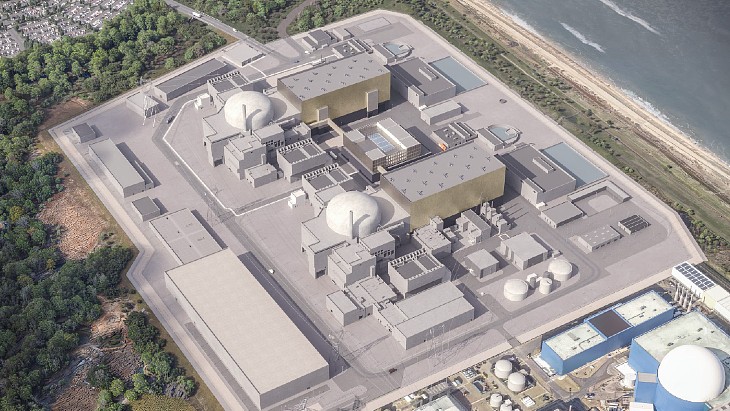A test reactor at the US Department of Energy's Idaho National Laboratory was restarted yesterday after more than 20 years on standby. The Transient Reactor Test Facility (TREAT), used to test nuclear fuels and materials under extreme conditions, had not operated since being shut down in 1994.
 |
| DOE and INL staff next to the TREAT reactor (Image: INL) |
TREAT can produce bursts of energy that are more than five times more powerful than conditions found in a commercial reactor. This allows fuel performance under extreme conditions - such as a simulated accident situation - to be studied.
Ed McGinnis, principal deputy assistant secretary for nuclear energy, said the department's decision to restore transient testing capability at INL was part of its effort to revitalise the USA's nuclear energy capacity.
"By investing in innovative fuel cycle infrastructure, we can advance nuclear as a key source of clean, resilient power and maintain US leadership in developing advanced nuclear technologies," he said.
The DOE proposed in 2013 to re-establish the capability to conduct transient testing of nuclear to aid in the development of new, advanced, safer and more efficient reactor fuels. It subsequently decided to restart TREAT. The reactor was restored to operational status after the completion of an extensive inspection, refurbishment, evaluation and assessment programme, culminating in the low-power run conducted yesterday. The resumption of operations was achieved 12 months ahead of schedule and cost nearly $20 million less than the $75 million originally estimated.
TREAT is part of INL's Materials and Fuels Complex, a testing centre for advanced technologies associated with nuclear energy power systems, and operated from 1959, producing thousands of transient pulses until it was shut down and maintained in standby status in 1994. The simple, self-limiting, air-cooled reactor, produces 100 kWt of steady-state power with a peak transient power of 19 GWt. Test assemblies placed in the reactor can be monitored in real time under postulated reactor accident conditions, allowing scientists to determine the appropriate safe limits for the fuels and materials in nuclear power reactors.
INL will now prepare TREAT for regular operation, with transient testing of nuclear fuels due to begin in 2018.
Researched and written
by World Nuclear News




_55530.jpg)
_42372.jpg)
_37521_70699.jpg)

_76087_55556.jpg)




